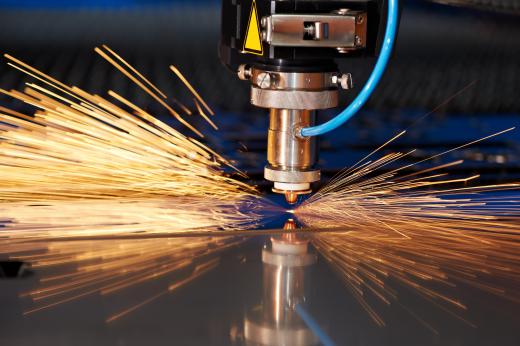Laser engraving is the process of using a laser to etch or mark the surface of a work piece. Compared to other engraving methods, laser engraving is often considered to have many advantages, though it also has some disadvantages. For instance, it can be extremely precise, but equipment costs are often prohibitive. This technology can be useful for many applications and can utilize many materials. Engraving methods vary, depending on the type of work piece and the material, which means that different engraving equipment is sometimes required.
Uses for laser engraving are usually based on the production of a specific design. The type of design often dictates the use. Professional engraving can include industrial or commercial production of engraved products. These can include duplicate images or customized images at nearly any image quality, though high-quality engraving is often more costly than low-quality engraving. Partly because of the wide range of materials that can be used, engraving also can be used for artistic work.

Stone, glass, metal, plastic and natural materials can all benefit from laser engraving. In fact, for some of these materials — such as stone and metal — engraving can be the primary form of marking for any purpose. Harder materials such as stone and glass are often difficult to engrave using other forms of engraving. For instance, laser crystal engraving relies heavily on the use of lasers to create images inside of hard, crystalline material. The variety of materials used results in there being many different types of engraving.
Industrial engraving, for instance, might make use of large machines to mass produce a single laser-engraved product or design. Professional engraving, on the other hand, might rely on small machines to customize products based on consumer needs. Despite these differences, the hardware used in laser engraving is often similar.
The hardware used in laser engraving is often constructed in three major parts: the laser, the working space and the interface. Lasers can be constructed in many ways, and some machines might have complex lasers while others rely on simple lasers. Working space often depends on the type of laser being used. For instance, simple engraving equipment might have a flat table for the work piece, whereas complex engraving equipment might hold and move the work piece on multiple axes. The interface of these systems is usually a computer into which the specific designs are put and through which the engraving commands are carried out.
